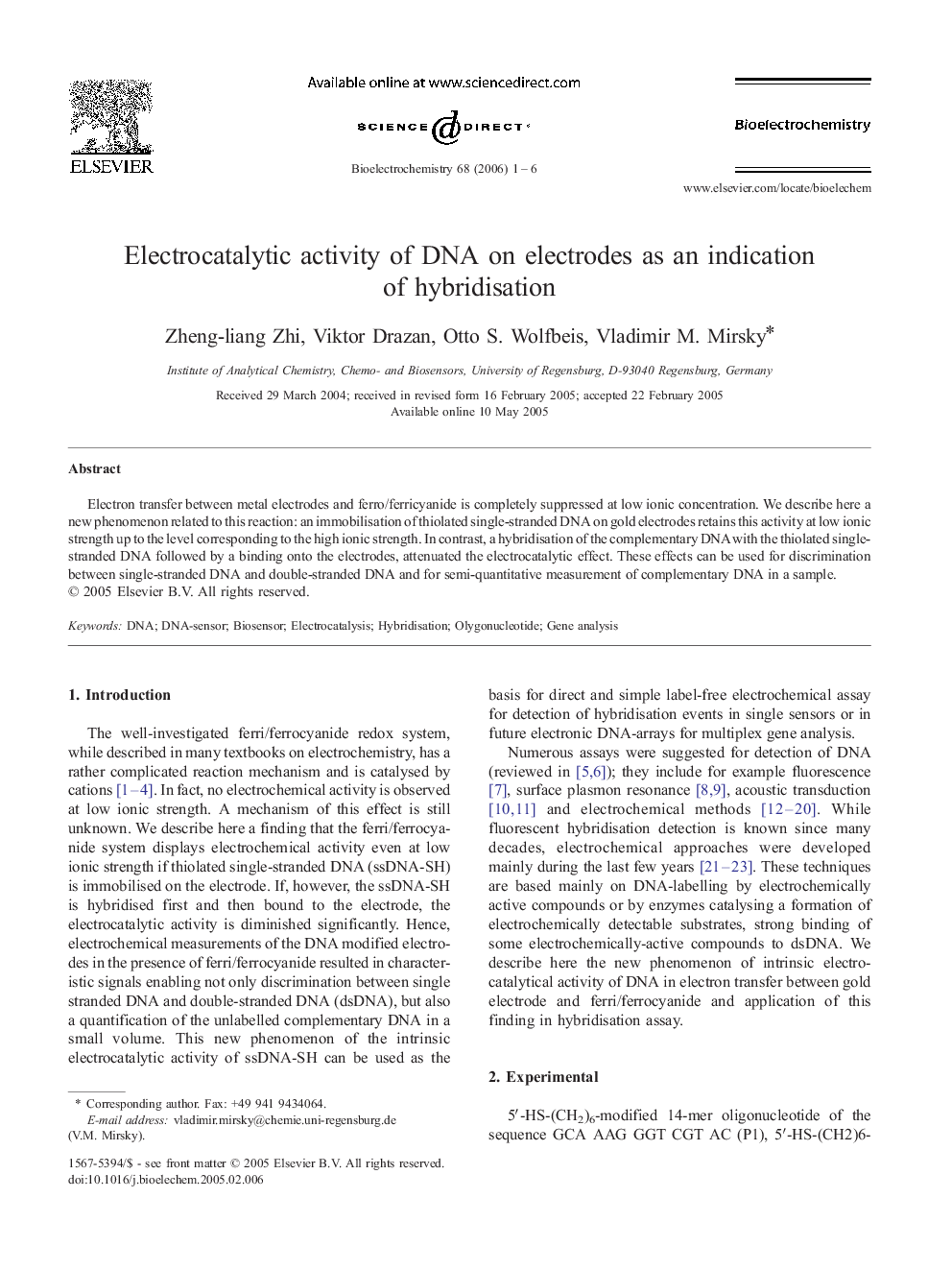| Article ID | Journal | Published Year | Pages | File Type |
|---|---|---|---|---|
| 1272745 | Bioelectrochemistry | 2006 | 6 Pages |
Abstract
Electron transfer between metal electrodes and ferro/ferricyanide is completely suppressed at low ionic concentration. We describe here a new phenomenon related to this reaction: an immobilisation of thiolated single-stranded DNA on gold electrodes retains this activity at low ionic strength up to the level corresponding to the high ionic strength. In contrast, a hybridisation of the complementary DNA with the thiolated single-stranded DNA followed by a binding onto the electrodes, attenuated the electrocatalytic effect. These effects can be used for discrimination between single-stranded DNA and double-stranded DNA and for semi-quantitative measurement of complementary DNA in a sample.
Related Topics
Physical Sciences and Engineering
Chemistry
Electrochemistry
Authors
Zheng-liang Zhi, Viktor Drazan, Otto S. Wolfbeis, Vladimir M. Mirsky,
